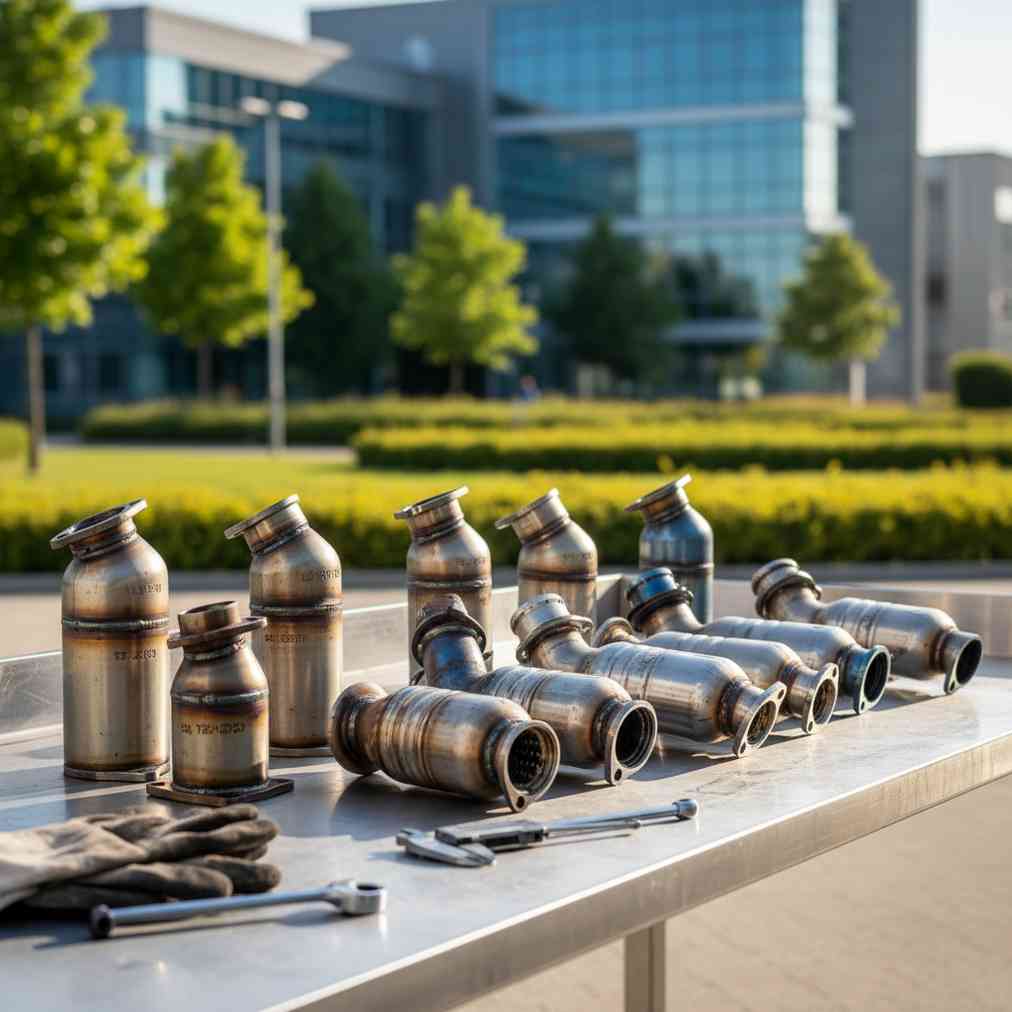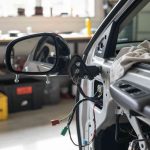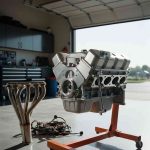Understanding Catalytic Converter Value: What Determines the Price?
The value of a used catalytic converter depends primarily on its precious metals content – specifically platinum, palladium, and rhodium. These rare metals serve as catalysts to reduce harmful emissions, making them extremely valuable in the scrap market.
| Primary Value Factors | Impact on Price |
|---|---|
| Precious Metal Content | Rhodium, platinum, and palladium concentrations drive 80% of value |
| Converter Type | OEM converters worth 50-300% more than aftermarket |
| Vehicle Make/Model | Luxury and hybrid vehicles contain higher metal concentrations |
| Market Fluctuations | Daily precious metal prices affect converter values |
According to industry data from RRCats, OEM converters typically contain significantly higher concentrations of these valuable metals compared to aftermarket alternatives, making them substantially more valuable in the resale market.
Current Market Prices for Used Catalytic Converters in 2025
Understanding current market prices helps buyers and sellers make informed decisions. The catalytic converter market shows significant variation based on several key factors.
| Converter Type | Price Range (2025) | Key Features |
|---|---|---|
| Foreign Car Converters | $75 – $250 | Moderate precious metal content |
| Domestic Car Converters | $100 – $325 | Variable metal concentrations |
| Truck Converters (OEM) | $250 – $800+ | High precious metal content |
| Hybrid Converters | $400 – $1,000+ | Highest metal concentrations |
| Aftermarket Converters | $50 – $150 | Lower precious metal content |
Market data from AutoCatalyst Market shows that hybrid vehicle converters, particularly from Toyota Prius models, command the highest prices due to their rich rhodium content.
Legal Requirements and Compliance for Purchasing Used Converters
The legal landscape surrounding used catalytic converter transactions has become increasingly complex due to rising theft rates. Understanding these requirements is crucial for legitimate buyers.
- Record Keeping: Most states require detailed electronic records of each transaction within 24 hours
- Seller Verification: Buyers must verify ownership through title documentation or vehicle registration
- Marking Requirements: Some jurisdictions mandate unique identifier marking on purchased converters
- Retention Periods: Many areas require holding converters for 7+ days before processing
- Licensing Requirements: Automotive recyclers typically need proper state licensing
When looking for legitimate sources, consider visiting established salvage yards near me that follow proper documentation procedures and maintain transparent business practices.
Major Risks in the Used Catalytic Converter Market
Purchasing used catalytic converters involves several significant risks that buyers must understand and mitigate.
Theft-Related Risks
The primary concern is inadvertently purchasing stolen converters. This can result in:
- Criminal liability for receiving stolen property
- Loss of investment when converters are confiscated
- Legal fees and court proceedings
- Damage to business reputation
Performance and Quality Issues
Used converters may suffer from diminished effectiveness due to:
| Performance Risk | Potential Consequences |
|---|---|
| Depleted Precious Metals | Failed emissions tests, increased pollution |
| Internal Damage | Reduced fuel efficiency, engine damage |
| Compatibility Issues | Poor fit, exhaust leaks, performance problems |
| No Warranty Coverage | Complete financial loss if converter fails |
For those considering alternatives, exploring OEM car parts from reputable sources can provide better quality assurance.
Best Practices for Safe and Legal Purchasing
Following established best practices helps ensure legal compliance and reduces risks associated with used catalytic converter purchases.
Due Diligence Steps
- Verify Local Laws: Check specific state and local regulations before any transaction
- Use Licensed Dealers: Work only with properly licensed automotive recyclers
- Document Everything: Maintain detailed records of all transactions and communications
- Inspect Thoroughly: Check for physical damage, rust, or signs of tampering
- Request Proof of Ownership: Obtain vehicle titles or ownership documentation
Recommended Sources
The safest approach involves purchasing from established, reputable sources such as:
| Source Type | Advantages | Verification Requirements |
|---|---|---|
| Licensed Recyclers | Legal compliance, documentation | State licensing, insurance verification |
| Established Salvage Yards | Physical location, reputation | Business registration, customer references |
| Authorized Dealers | Warranty coverage, quality assurance | Manufacturer authorization, certifications |
“The key to successful catalytic converter purchasing lies in thorough documentation and working with established, licensed dealers who prioritize legal compliance over quick profits.”
Maximizing Value When Selling Scrap Catalytic Converters
For those looking to maximize returns on scrap catalytic converters, several strategic approaches can significantly impact final payouts.
Market Timing and Research
Success in the scrap market requires understanding precious metal price fluctuations and market timing. Resources like RRCats scrap prices provide daily updates on market values.
- Monitor Daily Prices: Track platinum, palladium, and rhodium market values
- Identify Converter Types: Learn to distinguish between OEM and aftermarket models
- Research Serial Numbers: Use online databases to verify converter specifications
- Understand Seasonal Patterns: Recognize peak demand periods in the automotive industry
Optimization Strategies
| Strategy | Expected Benefit | Implementation |
|---|---|---|
| Bulk Sales | 10-20% price premium | Group similar converters, negotiate volume discounts |
| Proper Classification | 15-50% value increase | Accurately identify OEM vs aftermarket models |
| Condition Preservation | 20-30% value retention | Maintain intact ceramic cores, avoid damage |
| Professional Removal | 25-40% additional value | Clean removal without cutting or damage |
Industry Trends and Future Market Outlook
The catalytic converter recycling industry continues evolving, with several key trends shaping future market conditions.
Price Stabilization Factors
According to industry analysis from Auto Recycling World, several factors are contributing to market stabilization:
- Increased Recycling Volume: Expected to triple by 2030
- Regulatory Changes: Stricter environmental regulations driving demand
- Technology Improvements: Better precious metal recovery methods
- Market Maturity: More established pricing mechanisms
Projected Price Ranges
Industry experts predict the following precious metal price stabilization:
| Metal | Current Range | Projected Stabilization |
|---|---|---|
| Palladium | $800-$1,200/oz | $600-$700/oz |
| Rhodium | $3,000-$5,000/oz | $2,500-$3,000/oz |
| Platinum | $900-$1,100/oz | $800-$950/oz |
Technology and Authentication Methods
Modern authentication technologies are revolutionizing how catalytic converters are valued and verified in the marketplace.
Spectral Analysis Technology
Advanced recycling facilities now use spectral analysis equipment to precisely determine precious metal content, leading to more accurate pricing based on actual metal concentrations rather than estimates.
- X-Ray Fluorescence (XRF): Non-destructive testing for metal content
- Optical Emission Spectroscopy: Precise elemental analysis
- Digital Documentation: Blockchain-based tracking systems
- Serial Number Verification: Database cross-referencing for authenticity
Environmental Impact and Sustainability
The environmental benefits of catalytic converter recycling extend beyond simple waste reduction, contributing to broader sustainability goals in the automotive industry.
| Environmental Benefit | Impact | Measurement |
|---|---|---|
| Reduced Mining | Lower environmental extraction | 95% reduction in mining requirements |
| Energy Conservation | Decreased processing energy | 80% less energy than primary production |
| Waste Reduction | Diverted from landfills | Millions of converters annually recycled |
| Resource Recovery | Precious metal recapture | 90-95% metal recovery rates |
Making Informed Decisions: New vs. Used vs. Aftermarket
When considering catalytic converter options, understanding the trade-offs between different choices helps make informed purchasing decisions.
| Option | Initial Cost | Warranty | Performance | Long-term Value |
|---|---|---|---|---|
| New OEM | Highest | Full manufacturer | Guaranteed optimal | Excellent |
| Used OEM | Moderate | None/limited | Variable | Uncertain |
| New Aftermarket | Lower | Limited manufacturer | Adequate | Good |
| Used Aftermarket | Lowest | None | Poor to adequate | Poor |
For those seeking immediate financial return from old vehicles, consider exploring options to sell a junk car rather than attempting to part out individual components.
Key Takeaways for Catalytic Converter Transactions
Successfully navigating the used catalytic converter market requires balancing value optimization with legal compliance and quality assurance.
- Value Assessment: Precious metal content drives 80% of converter value
- Legal Compliance: Documentation and licensing requirements vary by state
- Risk Management: Theft concerns make legitimate sourcing crucial
- Market Timing: Metal price fluctuations significantly impact values
- Quality Considerations: Used converters may have diminished effectiveness
- Professional Assessment: Spectral analysis provides accurate valuations
The catalytic converter market continues evolving with improved regulations, better authentication methods, and growing environmental awareness. Whether buying or selling, success depends on understanding market dynamics, following legal requirements, and working with established, reputable partners who prioritize compliance and transparency.
For additional resources on automotive recycling and parts sourcing, current market data from RRCats and YS Catalytic Recycling provide valuable pricing information and industry insights.





Leave a Reply
You must be logged in to post a comment.